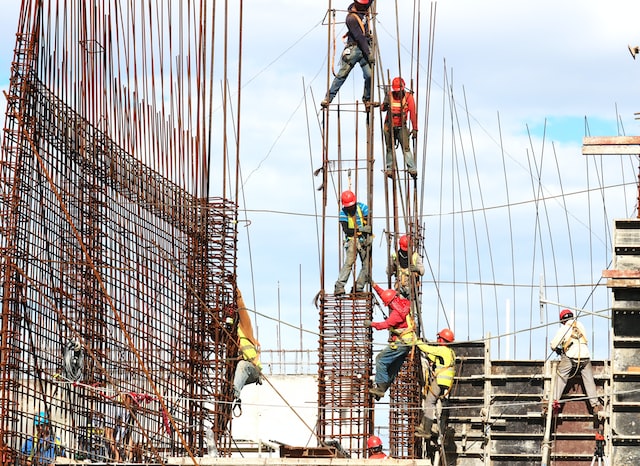Formwork is a temporary form used as a construction mold when constructing buildings or bridges. Formwork can be erected and installed repeatedly in multi-story structures. Hanging forms are fastened to reinforced steel, making them suitable for long spans and tricky elements such as trusses and arches. This structural foundation offers many advantages to builders. This article explores in detail the unbeatable benefits of using hanging formworks.
Improved Safety
Recently, the construction industry has prioritized increased safety and efficiency. One innovative method that has emerged to address these concerns is hanging formwork. This technique involves suspending the formwork from overhead support structures, eliminating the need for ground-based scaffolding or temporary supports.
The benefits of hanging formwork are substantial, particularly regarding enhanced workers’ safety. Limiting exposure to potentially hazardous working conditions, such as uneven terrain or confined spaces, helps reduce the risk of accidents and injury on the construction site. Moreover, the stable positioning of the formwork system improves the overall structural quality of the project, further bolstering the safety factor.
Increased Accuracy
Hanging formwork in construction sites is gaining prominence due to its enhanced precision and performance advantage. Embracing this innovative technology helps construction professionals achieve increased accuracy while erecting buildings and structures. Hanging formwork minimizes the margin of error and expedites the whole construction process, resulting in time and cost savings for both the builder and the client.
Reduced Labor Costs
Hanging formwork streamlines the building process by allowing large or complex structures to be shaped efficiently and effectively. This technology is designed to be more user-friendly, thereby minimizing the time and effort spent assembling and disassembling the system. By cutting down on labor-intensive tasks, construction companies can lower overall costs while accelerating project timelines safely.
Moreover, the precision offered by this method enhances the structural integrity of the edifice, ensuring a safer and more resilient outcome. Hanging formwork can provide substantial cost and time savings, making it a game-changer for modern construction sites.
Enhanced Durability
The utilization of hanging formwork in construction sites enhances durability. As an innovative approach, hanging formwork provides a more secure and robust solution for constructing buildings and other structures. Since this method does not rely on extensive ground support, it eliminates potential weak points and ensures evenly distributed weight. This results in stronger and longer-lasting structures that stand the test of time. Hanging formwork guarantees a superior level of durability that is unmatched by traditional methods.
Aesthetically Pleasing
Builders can use this creative approach to pour concrete in various sections, including vertical faces and overhead surfaces. This versatility significantly reduces the time spent constructing complex structures and ensures a sturdier and safer finished edifice. Consequently, buildings’ facades and overall appearances benefit from enhanced smoothness and symmetry, making them visually captivating.
With hanging formwork, not only is the construction process streamlined, but the resultant structure is also distinguished by its unparalleled elegance and architectural finesse. The integration of hanging formwork in construction sites marks a turning point for the industry, paving the way for unique structures that perfectly blend functionality and aesthetic appeal.
Using hanging formwork for a range of construction tasks provides numerous advantages. It is cost-efficient, simplified, and quick to install, offers better safety conditions for workers due to its self-supporting capabilities, and allows faster project completion times. Hanging formwork also eliminates the need for shoring in some cases while promoting tight control on expected tolerances. These advantages suggest that this system can benefit construction sites looking to streamline operations and gain higher productivity with lower costs and remarkable precision.

